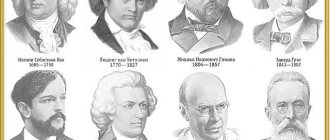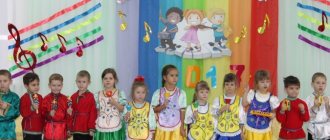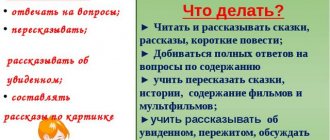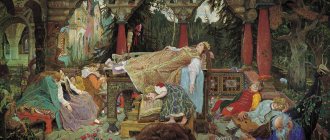When teachers begin to use innovative technologies in their work, as such visual techniques are already called, this makes it possible to balance the capabilities of all children. Due to their individual characteristics, children even of the same age develop differently and master the skills of using a brush, pencil, and paints in different ways. Sometimes a child is afraid that he will not be able to paint with a brush what he would like and may gradually lose interest in fine art. This does not happen if, along with the basic visual technologies, there are visual techniques of a slightly different type, requiring other skills, and sometimes allowing a completely unprepared child to create his own small work of art.
Quite often it happens that the most interesting from an artistic point of view are the works of those children for whom ordinary art classes are not easy. It is the opportunity to experiment, explore, try without fear of making mistakes that allows such children to reveal their artistic and creative potential.
Main tasks solved with the help of innovative technologies.
1.Development of children’s creative abilities, aesthetic perception of the surrounding reality. 2.Development of interest in experimenting with materials and means of representation. 3.Development of the ability to independently select materials, taking into account their inherent artistic properties, to choose means that correspond to the artistic concept.
The use of non-traditional technologies does not exclude the main tasks that the teacher sets for himself when conducting art classes.
Individual approach and team work with children
Each child is instilled with the ability to feel a balance between collective activities with a teacher and the manifestation of their own individuality. The whole group receives a given topic, but everyone completes this task in their own way.
Conducting GCD on drawing on a chosen topic
- A selection of demonstration materials for the conversation (photos and drawings) form the basis of the visual aid for the lesson. Such pictures should be selected taking into account the age of the children. The image should be clear, three-dimensional, moderately bright, understandable for children, and not difficult to reproduce.
- Music and poetry appropriate to the topic of the lesson will help create a favorable background and creative atmosphere. They are also selected taking into account age characteristics. The positive influence of classical instrumental music, such as Bach or Beethoven, has been proven. Thematic children's songs about the depicted object are also perfect for a subject image.
- The lesson notes on drawing in the chosen technique for different age groups are prepared by the teacher in advance.
A long-term lesson plan to familiarize yourself with the world around you
| Age group | Subject | Method and technique | Materials |
| 2-3 years, junior group | Apple | Dot drawing with a cotton swab. | Watercolor or gouache, cotton swabs, thick paper or cardboard with the outline of an apple. A jar of water, 3/4 full. |
| 3-4 years old, second youngest group. | Blooming spring tree | Graphics with colored pencils. | Set of colored pencils: pink, green, brown. Paper or cardboard. |
| 4-5 years old, middle group. | Autumn kindergarten. | Watercolor | A set of watercolor paints 10-12 colors, paper or cardboard, 2-3 small or medium sized squirrel brushes, a jar of water. |
| 5-6 years old, preparatory group | Undersea world | Application. Using stencils, drawings are drawn onto paper with a simple pencil, then they are cut out and pasted onto a background sheet. | Base - turquoise colored cardboard, PVA glue, hard glue brush, glass of water, a set of colored paper or cardboard of different colors, scissors, stencils (clams, shells, starfish, fish, octopuses, etc.), a simple pencil . |
Methodology for working with operational (technological) maps.
Operational cards allow the teacher to clearly and clearly introduce children to a new way of drawing; help children analyze what materials will be needed to perform work using a particular technique; what sequence of operations needs to be performed to achieve the desired result.
After the children have become familiar with the new technique, the operation card is placed in the center of the art. Children use it in independent activities to remember how to work with this technique. Gradually, as they become acquainted with other innovative technologies, a selection of cards is collected in the center, which allows the child to independently make a choice of techniques and materials in accordance with his idea.
Description of visual techniques.
Sprinkling
Not an easy technique. Its essence is to spray drops using a special device, which in kindergarten will be replaced by a toothbrush and a stack (a wooden stick with ends widened in the shape of a spatula). Using a toothbrush in your left hand, we will pick up a little paint, and we will move the stack along the surface of the brush - with quick movements, towards ourselves. The splashes will fly onto the paper, and maybe not only onto it... That's all.
Over time, the drops will become smaller, they will begin to lie more evenly and where they need to be. But this will happen over time, so it’s better to start mastering this technique during a walk in the summer. Now let's get to work. "A napkin for mom." Let’s “spray” it with different colors and admire the resulting effect. "Snowfall". White “spray” on different colored backgrounds. White snowflakes dance and weave into a round dance. “Golden autumn has spun.” Spray the swirling foliage with gold paint. Use a brush to draw the trunks. Material: regular comb, brush or toothbrush, paint.
Using this method of drawing in your work, you can convey the direction of the wind - to do this, you need to try to ensure that the spray falls in the same direction throughout the entire drawing. Express seasonal changes vividly. So, for example, the leaves on the awn turn yellow and red earlier than on birch or other deciduous trees. They are yellow and green and orange on her. And the method of spraying will help to convey all this diversity. Children aged 6-7 years are engaged in spraying.
Drawing with palm, edge, fingers
Drawing technology: in the middle of the sheet the child draws with the edge of his palm, or with his palm or fingers. It is dipped in paint and imprinted on paper as necessary for the design it represents. Then the paint is wiped off with a rag. Materials: a sheet of landscape paper, sockets with gouache paint, brushes, a wet rag.
Lesson topics: “Tulips”, “Tree in summer”, “Spring tree”, “Rain”, “Mimosa”, “Edge”, “Fish”, “Rowan twig”, “A snowball is falling, falling”, “Magic butterflies”, “Festive Fireworks”, “Cheerful Palms”, “Chicken”, “Swan”, “Rabbit”, “Snail”, “Winter Tree”, “Sunshine”
Drawing with a candle
Material: paper, wax, paraffin candles, watercolors or paints. Gouache is not suitable for this method of drawing, because... does not have shine. You can use mascara.
First, the children draw with a candle everything that they want to depict on the sheet (or according to the topic). A magical drawing is obtained on the sheet, it is there, and it is not there. Then watercolor is applied to the sheet using the wash method. Depending on what you're painting, watercolor may be combined with ink. Similarly, work is performed using the “Watercolor and wax crayon” technique.
Mirror reflection
Develops imagination and creativity.
Materials: gouache of all colors, brushes, paper.
First, fold a sheet of paper in half. Then they unfold. Apply gouache stains of various sizes (at random). Then they roll it up again, run it with their hand, let the paint mix, unfold it and get anything they want, from moths to Christmas trees, from puppies to robbers. This type of drawing is very popular with children of all ages.
On crumpled paper
Painting technology: this technique is interesting because in places where the paper bends, the paint becomes more intense and dark when painted - this is called the mosaic effect. Drawing on crumpled paper is very easy. Before drawing, carefully crumple the paper, then carefully smooth it out and begin drawing.
Materials: crumpled paper, gouache paints, brushes, napkins.
Class topic: “Sea Kingdom”
Tamponation
A fun activity! Let's make a tampon from gauze (it can be replaced with a piece of foam rubber). The stamp pad will serve as a palette. Let's pick up some paints and, with light touches on the paper, we'll draw something fluffy, light, airy, and transparent.
In the younger groups - clouds, sunbeams, snowdrifts, dandelions. And it doesn’t matter that not only your heroes, but also your hands will become colored: they will wash off easily!
In the middle group, with a large swab it is very pleasant to draw fluffy chickens, funny hares, a kind snowman, bright fireflies (finishing the necessary details).
And older preschoolers can combine this technique with the “Stencil” technique in integrated classes (application and drawing). First, let's cut out the stencil. Who wants which one! Then, pressing it with your finger to a sheet of paper, we trace along the contour with light touches of the swab. Carefully lift the stencil... Miracle! Crisp and clear, it remained on paper! All the same things can be repeated in a different color and in a different place.
Painting technology: dilute watercolor paint in a saucer. Crumple the paper or plastic bag, dip it in paint and make an imprint on the paper. Then we will use a brush to complete the details of the drawing.
Materials: crumpled paper or plastic bag, watercolor paints, brushes, saucer, napkins, sheet of paper.
Lesson topics: “Spring foliage”, “Gardens have bloomed”, “Autumn foliage”, “Trees in winter”, “The owl is a wise head”, “Happy ducklings”, “Snowman”, “Winnie the Pooh and Piglet”
Monotype (obtaining an image by transferring it from one surface to another, imprinting the image)
One of the most interesting, colorful and inventive methods is monotype. To solve this, you need to have photo paper or any other paper (the higher quality the paper, the better the image), watercolor paints, soap, brushes or toothbrushes, water, glass or plastic plates. They can be of any shape and size.
The monotype technique requires the child to have developed visual skills, precision and accuracy, and the need for consistent actions. The difficulty of monotype lies in the quick creation of the drawing. Therefore, it is recommended: - at the initial stage of training, use the technique of co-creation with an adult; - the child should receive a sheet of paper with a ready-made fold line; — it is better to organize training in monotype technique with a subgroup of children.
Method of work: Watercolor is applied to a glass (plastic) base using paint, water, soap, and a brush or toothbrush. A sheet of paper is placed on top and an impression is made with your fingers, palm or swab. You can add the necessary details to the resulting image or leave the drawing as is. Frame the dried work.
Drawing with crumpled paper or plastic bag
Painting technology: dilute watercolor paint in a saucer. Crumple the paper or plastic bag, dip it in paint and make an imprint on the paper. Then we will use a brush to complete the details of the drawing.
Materials: crumpled paper or plastic bag, watercolor paints, brushes, saucer, napkins, sheet of paper.
Visual arts classes in kindergarten
Visual arts classes in kindergarten.
At classes in visual arts at preschool educational institutions, favorable conditions are created for the development of children’s speech, the implementation of free, natural speech communication about the activity and its result. Drawing, modeling, and appliqué classes help solve problems in children’s speech development: accumulating and enriching vocabulary, developing coherent speech, correct pronunciation, the ability to describe what they see, and talk about the created image. The process of creating an image in a child is closely related to speech.
Children name the objects they represent; describe them, highlighting and noting their characteristic features. They explain the actions and actions of their characters, sometimes describe in detail the entire process of the image, enter into dialogues with their playing partners, and tell what, how and why is happening in the drawing. Speech accompaniment of the process of drawing and depicting objects allows the child to realize what he is drawing, sculpting, cutting out and pasting; understand and highlight the qualities of what is being depicted, and consistently build this process. By naming what he draws and what he will depict later, the child, as it were, plans his activities and establishes a sequence of actions to create images. The teacher should not only not stop children’s conversations, their statements in the process of visual activity, but, on the contrary, encourage their communication, stimulate it, asking how they will create the image, in what sequence, what materials they may need additionally, etc. P.
In drawing, modeling, and appliqué classes, children develop imagination, perception, memory, and thinking. Preschool age is sensitive for the development of memory and imagination, a child’s self-control, and therefore an adult should not rush to give the child answers to the questions posed. The teacher needs to make the natural process of children’s lives and activities creative, to put children in situations of cognitive, artistic, and moral creativity. Special work in classes, games, etc., aimed at developing these cognitive processes in older preschoolers, should organically enter the child’s life.
Organizing an interesting and meaningful life for a child in a preschool institution and family, enriching this content with vivid impressions, providing emotional and intellectual experience that will serve as the basis for the emergence of ideas and will be the material necessary for the work of imagination, memory, thinking and will contribute to the activation of speech.
The social orientation of visual activity is that the child creates recognizable images. He draws not only for himself, but also so that his drawing tells about something, makes someone happy about something, so that the object or phenomenon he depicts is recognized.
Sometimes you hear that children are happy with any of their drawings. Because they create for themselves and the opinions of others do not bother them. This is wrong. A child of preschool age reacts sensitively to the comments of his friends, the assessment of the teacher, and the family. Praise makes children happy, puts them in a good mood and has a positive attitude toward their activities.
Visual arts classes are held in kindergarten in all age groups from 2 to 4 times a week. The content of classes is planned by the teacher in accordance with the requirements of the program and taking into account the knowledge and visual skills that the children have.
Preschoolers can engage in visual arts outside of group classes, during the time allotted for independent activity. The teacher must support this desire, encourage the child to show initiative and independence, and apply the acquired visual skills. Children's desire to draw, sculpt, and construct is short-lived and not sustainable. Older preschoolers experience a certain need for creative activity, which indicates that they have abilities that require attention and proper guidance from the teacher. Each type of visual activity has its own capabilities in displaying a child’s impressions of the world around him. Therefore, the tasks facing visual activity change and are specified depending on the characteristics of each type, the uniqueness of the material and the methods of working with it.
In the process of preparing for and conducting classes at preschool educational institutions, favorable conditions are created for the formation of such personality qualities as inquisitiveness, initiative, mental activity and independence, which underlie children's fine art, as well as any other creativity. Of great importance for mental and aesthetic education is the formation in children of active perception, the ability to intensify life experience.
Forming the readiness of preschool children for school through visual activities should be aimed at developing in children:
manual skills (performing a variety of practical tasks, creating crafts using various tools and materials, while also developing such qualities as accuracy of voluntary hand movements, eye, accuracy, attention, concentration);
spatial orientation, in particular, on a sheet of paper;
sense of rhythm, ability to coordinate the tempo and rhythm of movements, words and gestures;
visual and graphic skills in the process of visual activity, as well as with the help of graphic exercises.
Special developmental tasks are offered to the child during art classes, mainly in a playful way. According to its structure, the lesson is divided into an introductory part, a main part and a final part.
The task of the introductory part is to create a positive emotional background for students and introduce them to the game situation. At this stage, as a rule, various finger warm-ups are used. They create a positive classroom atmosphere and promote the development of fine motor skills.
The tasks of the main part are selected taking into account the objectives of this activity and from the point of view of convenience for collective work in a group.
The task of the final part of the lesson is to summarize. An essential point here is the preschoolers’ answers to questions about what they did in class and what they learned.
The general guideline when conducting classes is not to rush to move on to the next task if the previous one has not been well worked out by all students.
When conducting classes, it is very important that all children understand the instructions correctly. Preschoolers should be given more independence when completing tasks. The classroom should be large enough to not only set up tables for all children, but also conduct outdoor games.
Each visual activity lesson in a preschool educational institution begins with the teacher addressing the children, talking with them, and often showing some visual material is also used. Therefore, it is necessary from the very beginning to educate children to pay attention to words and visual demonstrations. Visualization is of great importance in visual arts classes. An important condition for the development of special skills and increasing the level of a child’s knowledge is the selection of certain material and subjects for children’s visual activities. This promotes the development of observation, children develop the ability to look longer at what is shown to them, and repeatedly refer to visual material in the process of doing work. At the same time, children develop an increasingly consistent attention to verbal instructions that are not supported by the display of visual material. It is extremely important from the very first steps to cultivate in children a sustainable interest in visual arts, which helps develop perseverance, ability to work, and perseverance in achieving results. This interest is initially involuntary and is aimed at the process of the action itself.
The teacher gradually carries out the task of developing interest in the result, in the product of the activity. This product is a drawing, visual and thereby attracts the child to itself, attracts his attention. Gradually, children become more and more interested in the results of their work, the quality of its execution, and not only experience pleasure in the drawing process itself. Children of six or seven years old, who are on the threshold of school, have new motives for their interest in classes - a conscious desire to learn to draw well. There is an increasing interest in the process of doing work according to the instructions of the teacher in order to get a good result. There is a desire to correct and improve your work.
Starting from the younger group, it is necessary to cultivate in children an interest in the work of their comrades, a friendly attitude towards them, and the ability to fairly evaluate them. The teacher himself needs to be, perhaps, more tactful and fair when assessing work, and express his comments in a soft, friendly form. Only under this condition does he foster friendly, camaraderie between children.
The activity of children in the process of doing work is manifested at a good pace and continuity. In this regard, in younger groups, significant individual deviations are acceptable: some children are faster and more active, others are slow and lethargic. In the middle group, it is possible to increase the requirements for completing work without distractions, and try to overcome the slow pace that is characteristic of some children. This should be achieved patiently and persistently, but without presenting categorical demands to children in a harsh form. In the older group, the fight against slowness and frequent distractions from work takes on special importance in connection with preparation for school. It is necessary to take care not only about a good pace of work, but also about the thoroughness of its implementation, without haste, which prevents you from doing the work accurately, fully expressing your idea, and making it complete. Accuracy and thoroughness in performing work depends not only on discipline, but also on mastering the skills of using a pencil and brush. Drawing skills are related to the development of a child’s hands - coordination, accuracy, smoothness, freedom of movement. The development of movements in different types of visual activity is united by a goal setting that directs this development to the image and transfer of the shape of objects or to the construction of a pattern or decoration. All children master these skills very differently, but with the right teaching methods, they all master them to the extent provided for by the kindergarten program.
Of considerable importance for the development of movements are the labor skills that children acquire in the process of preparing for art classes and cleaning up after them. With each year of being in kindergarten, the demands on children increase, both in terms of preparation and cleaning, as well as in terms of the duties of group attendants. Children invariably grow in responsibility for every task entrusted to them. Having made an effort and received approval, the child experiences joy and his mood rises.
Children enjoy drawing, largely due to the fact that these activities include the process of inventing content and developing actions close to play. It is necessary to support this desire without limiting children only to the task of depicting individual objects. Inventing the plot of your drawing not only gives children pleasure, which is also very important, but also develops imagination, invention, and clarifies ideas. The teacher needs to take this into account when planning the content of classes, and not deprive children of the joy of creating characters, depicting the place of their action and the action itself by means available to them, including a verbal story.
In the process of visual activity, favorable conditions are created for the development of those sensations and emotions that gradually turn into aesthetic feelings and contribute to the formation of an aesthetic attitude to reality. Already in early preschool age, the transfer of such qualities of objects as shape, color, structure, size, position in space contributes to the development of a sense of color, rhythm, form - components of the aesthetic sense, aesthetic perception and ideas.
Thus, in the process of visual activity, various aspects of education are carried out: sensory, mental, aesthetic, moral and labor, which contributes to effective preparation for school.
In visual arts classes, it is possible to improve a preschooler’s ability to accept a learning task and follow the rules, control his own actions and develop “manual skill”, which ensures the preparation of the hand for writing. In the process of drawing, both concrete figurative thinking and abstract logical thinking are coordinated; it connects visual perception, motor coordination, speech and thinking, helping the child organize the acquired knowledge.
In the process of drawing, the child develops the ability to control a tool (pencil, brush), coordination of the movements of both hands, coordination of hand and eye, and visual control. At classes in visual arts at preschool educational institutions, favorable conditions are created for the development of children’s speech, the implementation of free, natural speech communication about the activity and its result. Children name the objects they represent; describe them, highlighting and noting their characteristic features. The organization of classes and the instructions of the teacher should help preschoolers to carry out their plans in a focused, in-depth manner, be able to coordinate their actions, treat their comrades kindly, take their interests into account, be able to give in and, if necessary, help, thus, creative activity allows them to develop the moral and volitional qualities of children , motivation for joint activities and learning increases.







